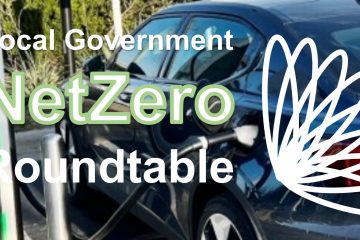(This blog was based on presentations John Ravlic made for Technology One, as part of their 2019 Roadshow – East Coast ShowCase.)
The purpose of this blog is to share my insights on creating a culture of innovation. I will tease out the issues and challenges that are occupying the time of many council executives. I will explore the influence of oversight and customer expectations. I will look at what the sector sees as the issues and challenges that are holding it back from digital transformation and the importance of innovation and new ways of working. I will conclude with a 5 Step Action Plan for CEOs.
LOCAL GOVERNMENT CONTEXT
Before I launch into the “culture of innovation”, let’s explore the Australian local government landscape, against which innovation and digital discussions are currently taking place.
Governance and Compliance
Much of the executives’ valuable time can be taken up by political processes and associated governance and compliance matters, not leaving much time or energy for strategic initiatives such as digital transformation and innovation. However, we understand that if you don’t do the governance and compliance well, you don’t get to do the fun stuff.
Rate Capping
Our two most populous states (NSW and Victoria) now have a rate cap in place. We almost had a third state when Marshall’s Liberals won Government in SA last March, with a mandate to introduce a rate cap. This was denied by opposition parties who produced their own accountability framework for councils.
For the decade prior to the rate cap being introduced, Victorian councils have been adopting budgets with an average 5% rate increase. The introduction of the cap, which is 2.5% for the next financial year, will require Victorian councils to make significant adjustment to levels of service provided to the community in the short term.
Recent rate capping talk in SA and Victoria has resulted in some councils self-imposing rate caps. Some have gone to the extent of adopting zero percentage rate increases while others have adopted rate increases at the lowest levels we’ve seen in over a decade, which has been largely driven by elected members.
Numerous NSW councils have applied to the Independent Pricing and Regulatory Tribunal to vary the rate cap from 2.7%. One inner-city council applied for a 40% rate increase to meet their infrastructure obligations. Failing approval these councils will have to reduce their services, which will be mostly in infrastructure renewal.
Infrastructure Assets
Asset management remains the outstanding challenge. Councils must get their assets in order. Without this it will be next to impossible for councils to understand the extent of their financial obligations in years to come.
The NSW Audit Office concluded, for the last financial year, that councils reported insufficient spending to renew and maintain their infrastructure assets. By failing to invest in infrastructure councils are creating a backlog, which will need to be addressed at some future point in time.
The Queensland Audit Office has foreshadowed that it will conduct a performance audit next financial year on strategic asset management to ensure councils are effectively managing their infrastructure assets.
Waste and Recycling
The Victorian Auditor General‘s review of this year’s budgets showed that councils increased their waste charges, levied on households by 14%. As other countries move to exclude Australian recyclables (China, Indonesia and more recently Malaysia) councils will continue to experience increases in recycling costs.
Councils are considering varying their waste and recycling service levels by:
- separating out food, paper and glass to reduce contamination of recyclables;
- reducing collections of recyclables; or
- ceasing collections of recyclables altogether, as they are increasingly ending up in landfill.
Amalgamations
There is some need for metropolitan governance to deal with public transport, roads, congestion and planning matters. Arrangements for metropolitan governance may be considered in the near future by some jurisdictions, however they are highly unlikely to include amalgamations.
While Tasmanian councils have been attempting voluntary mergers it’s fair to say there is no appetite for local government amalgamation in any of the jurisdictions.
Renewable Energy
Councils across the country are taking steps towards sustainability and making significant investment in renewable energy. Solar and wind renewable energy initiatives, electric vehicle trials along with upgrades of streetlights to energy efficient LEDs are helping councils reduce their emissions and achieve significant savings on their energy bills. Over 100 councils from around Australia have committed to switching to clean energy.
INFLUENCE OF OVERSIGHT
Local government oversight, in most jurisdictions, now includes:
- the Auditor General
- the Ombudsman;
- the Local Government Inspectorate; and
- the Crime and Corruption Commission;
with local government association’s providing sector-led development and capacity building programs.
We’ve also seen the introduction of various benchmarking websites, which compare the efficiency and performance of councils. These websites are designed to deliver on transparency and accountability commitments to ratepayers.
INTERNAL CUSTOMER EXPECTATIONS
Driven by accountability and performance measures local government managers and executives expect their in-house systems to provide information and reports in real time to enable effective decision making.
The proliferation of standalone systems and siloed data requires ongoing validation and reconciliation before any of the data/reports produced can be acted upon.
I’m sure many of you have been provided reports that contain data different to that in the corporate system. In a siloed world of systems and data everything needs to be reconciled against the council’s corporate system, which is used to meet its compliance obligations – reporting to council and external agencies.
To enable organisational decision making, reporting and compliance councils need a single source of truth.
EXTERNAL CUSTOMER EXPECTATIONS
The digital citizen is very much an anytime/anywhere/any device consumer of digital services.
Digitising Banking, Retail, Travel, Home Entertainment have all made significant impact on our daily lives.
How good does it feel to buy a book on Amazon and have it on your Kindle or iPad within seconds to access. I get a real buzz out of it and now take it for granted.
Over weekend brunch in my favourite café, I was able to book my recent trip to Europe, everything from airfares, transfers, accommodation and tours. In 2019 this is not exceptional. This is the norm.
So why shouldn’t I expect to be able to apply for a resident’s parking permit and renew a dog registration after I finish coffee? Why shouldn’t I expect what is already the norm? The standard?
Customer expectations will continue to drive councils towards provision of digital services. Your customers are increasingly digital citizens and generally they prefer to deal with you online rather than take time-off-work to see the council and council staff because it’s just so much more convenient.
WHAT’S HOLDING US BACK?
As you can imagine digitising government services is a hot topic, which has been the subject of numerous surveys and reports.
So, what do they identify as the key issues and challenges moving forward?
| Challenge No 1 | Lack of leadership steering digital transformation has been described as the biggest concern for the public sector. |
| Challenge No 2 | Councils remain highly reliant on legacy infrastructure and their applications, which absorb much of the available funding leaving very little for transformation projects. |
| Challenge No 3 | Limited budgets and unsuitable organisational cultures are the biggest barriers to achieving digital transformation in local government. |
| Challenge No 4 | The journey towards whole-of-council requires councils to challenge their status quo that is often reinforced by organisational silos and their individual legacy systems. |
| Challenge No 5 | There is a scarcity of skills, knowledge and experience required to drive digital transformation. |
There is one other challenge that hasn’t been mentioned elsewhere. The complexity of local government business, which is such that it requires significant investment of resources to bring about digital benefit across 50/60 council services.
NEW WAYS OF WORKING
At 40 cents per transaction, digital transactions are some 50 times cheaper than face-to-face transactions. So, when you have 600 million transactions, like UK’s local government did when they commenced their digital journey, there are many reasons to move away from face-to-face transactions, to channel shift in order to achieve billions in savings.
The online environment is the place where most of your citizens and customers reside daily. Your citizens and customers expect to deal with a council that is responsive and will respond in a way that meets their needs.
Some councils are moving away from digitising paper forms to reimagining services with customers and developing and implementing end to end digital solutions, however they are in the minority. Transforming services requires a culture of innovation to develop and adopt new ways of working and to deliver for communities.
A committed leadership can bring about effective change to organisational culture, which promotes innovation. What’s required is a whole-of-council approach to culture and a whole-of-council approach to digital transformation.
Digital transformation means different things in different councils. Digital transformation is generally a higher order aspiration that requires political will as well as organisational commitment. It’s a mistake to think that any IT department will be able to deliver digital transformation on their own.
Digital transformation is about understanding your business and how you do things and that’s why it requires a whole-of-council approach – line managers and service managers must be enabled to take the lead and responsibility for the success of rolling out digital services.
The efficiency of moving services online is only realised when the business processes that support the service are re-engineered to take advantage of available technology. Moving services online must be informed by customer needs and expectations as well as various compliance requirements.
Innovation is important in the digital transformation process because of the complexity of local government. To cope and deal with issues and challenges that will arise during the transformation process, councils will need to innovate.
Culture, systems, processes and procedures need to be designed to empower transformation, enable staff development and growth and support innovation.
Innovation Journey
It’s important to take the necessary steps to ready the organisation for the innovation journey. Work with elected members, staff and the community to raise their awareness and educate them about:
- why innovation is important;
- what it means;
- what they can expect; and
- how they will be involved.
Stimulate the innovation learning and experience of your organisation. Expose them to innovation experts through incursions and excursions. Bring experts into your organisation to share their innovation knowledge and experience with your elected members, staff and community. Send members of your organisation to other councils and businesses to see their approach to innovation — to observe and learn from those that already have successful innovation programs.
Don’t create a department of innovation and make it their job to innovate. Take a whole-of-council approach to innovation. Make innovation a part of everyone’s job. However, make it someone’s job to be the in-house GoTo person to drive, coordinate and advise on innovation. Develop innovation champions that will be the local spark across every part of the council. Bring your innovators together regularly and let them spread their stories of success and learning.
None of this will work if innovation is in competition with other parts of the organisation. Hence the importance of aligning council systems, structures and processes to support innovation.
| Workforce planning | define the current and future workforce skills and attributes that will drive the organisation’s innovation journey |
| Position description | capture the innovation responsibilities, knowledge, skills and experience in position descriptions across the council |
| Recruitment & selection | attract and appoint diverse people with the right skills and experience to enable your innovation journey |
| Induction | promote innovation as part of “how we do things around here” – it’s expected that everyone will innovate |
| Training and development | raise awareness, educate and develop elected members, staff and the community about innovation – idea generation, creativity, thinking differently, solving problems and doing things differently |
| Performance reviews | establish and review organisational, service and individual KPI‘s that promote innovation and reward success and learning |
| Management development | impart skills and experience to build and support a culture of innovation |
| Structure, systems & processes | implement and review on an ongoing basis structures, systems and processes that encourage and sustain innovation across the organisation |
CEO’S ACTION PLAN
While much of the alignment of systems, structures and processes to support innovation can be facilitated by managers and executives there are some things that fall on the CEO to drive:
| Step 1 | Commit to the digital journey by adopting a clear vision and digital strategy for the organisation with support from elected members. |
| Step 2 | Adopt and build a culture of innovation to propel the organisation towards its digital future. |
| Step 3 | Establish internal capability – skills, capacity and financial resources to embark on the digital journey. |
| Step 4 | Raise awareness and educate your council, councillors and community on the benefits digitising services will bring |
| Step 5 | Audit and identify opportunities for digital transformation including the “low hanging fruit” |
CLOSING REMARKS
Digital transformation means different things across the local government sector.
It’s important for each council to define its own digital journey.
Look around…Reach out…Learn and share…You’re not on your own!
Ravim RBC
Ravim RBC is a strategic consultancy established to help councils move beyond day-to-day management. This includes strategic initiatives such as business transformation, workforce strategy and best practice programs. Our work with councils on service reviews is providing executives and councillors with visibility and understanding of what it takes to deliver each council service.
By John Ravlic, 12 August 2019



0 Comments